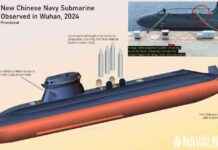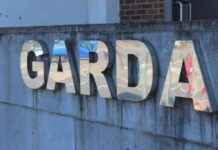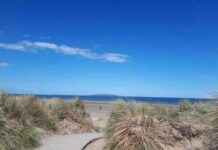Exploring Shipwrecks: Local Diver Uncovers Three Treasures with Drone
In a remarkable discovery, a local diver using a drone has uncovered three previously undocumented shipwrecks off the coast of Portmarnock. These wrecks, believed to date back to the 19th century, were captured in aerial images taken by underwater photographer Nigel Motyers. The find has added to the 18,000 sites recorded in the Wreck Inventory of Ireland Database, shedding new light on Ireland’s rich maritime history.
Karl Brady, a senior archaeologist with the National Monuments Service, emphasized the importance of protecting these newly discovered wrecks. He noted that while shipwrecks have been uncovered on Portmarnock Beach in the past, the recent discoveries at the southern end of the beach are particularly significant. Brady highlighted the need to manage, protect, and safeguard these wrecks to preserve their historical value.
The wrecks, which have been exposed by continuous tidal and storm action, are in varying states of preservation. Despite the challenges posed by erosion, the team of archaeologists has identified key structural elements such as timber frames, planking, metal knees, and a metal winch/windlass system on one of the vessels. These findings offer valuable insights into the construction and history of the ships.
Heritage Minister Visits the Wrecks
Heritage Minister Darragh O’Brien recently visited the site of the newly revealed shipwrecks at Portmarnock. Expressing excitement over the discovery, Minister O’Brien emphasized the importance of unraveling the stories behind each wreck. He commended the National Monuments Service for its efforts in preserving Ireland’s underwater heritage, as evidenced by the extensive records in the Wreck Inventory of Ireland Database.
During the visit, underwater specialist archaeologists from the National Monuments Service assessed the wrecks, noting their unique characteristics and potential historical significance. The Minister underscored the need for further research and documentation to uncover the roles these vessels played in shaping Ireland’s maritime history.
The Stories Behind the Wrecks
The first of the three newly discovered wrecks is believed to be the Malfilatre, a schooner that ran aground at Portmarnock Point over a century ago. The vessel, which was en route from Cardiff to Dublin with a cargo of coal, encountered severe weather conditions that led to its demise. The crew’s harrowing experience of spending a night stranded at sea highlights the dangers faced by sailors in the 19th century.
The second wreck, a wooden vessel buried in the sand, offers clues to its origin and age through its construction and materials. The presence of composite iron pieces suggests a later date in the 19th or early 20th century. Similarly, the third wreck, with its exposed stern end and framing timbers, provides a glimpse into the design and structure of maritime vessels from the past.
Research conducted by the National Monuments Service has revealed a pattern of shipwrecks off the coast of Portmarnock, many of which were lost during stormy weather conditions. The challenges faced by these vessels in seeking refuge or navigating treacherous waters underscore the risks involved in maritime travel during that period.
Preservation Efforts and Future Research
Despite the exposure of the wrecks due to shifting sands, efforts are underway to monitor and protect them from further deterioration. The cyclical nature of beach erosion and sedimentation poses a challenge to preserving these historical artifacts. However, ongoing monitoring by the National Monuments Service will ensure that the wrecks are properly documented and assessed over time.
The discovery of the three shipwrecks at Portmarnock represents a significant contribution to Ireland’s maritime heritage. By uncovering these hidden treasures, divers and archaeologists have opened a window into the past, allowing us to piece together the stories of these vessels and the lives of those who sailed on them. As research continues and new discoveries are made, the rich tapestry of Ireland’s maritime history will be further illuminated for future generations to appreciate.












